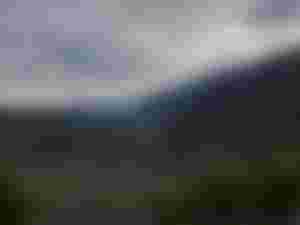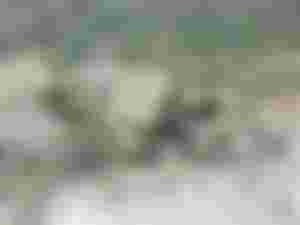As you rise above sea level, atmospheric pressure and oxygen decrease, and air temperature decreases. When you start climbing up from 1500 meters, those who are not used to it may experience serious health problems. The decrease in air, humidity and temperature can be both tiring and cause a dizzying effect. As the altitude rises, breathing difficulties and loss of body temperature occur, you get tired more easily and you feel exhausted.
My journey today wasn't at high enough altitude for these effects to occur, but it was close to it. We climbed to an altitude of 1350 meters and felt the coldness of the air. There was no difficulty in breathing due to other oxygen depletion, maybe because we were not exposed to high enough altitude, maybe because we did not have chronic diseases that could force us.
We went by car until a certain point of the trip, this has already become our routine in activities such as nature walks, climbing.
We continue by car up to a certain point and then on foot. We do this both for the thought of an emergency situation and as a precaution because we do not trust ourselves too much. After all, we are amateurs, not professionals and we do not want these beautiful moments to end badly.
During treks and climbing, sometimes the heat, sometimes cold or wind, and sometimes the geographical difficulty of the destination can be the most challenging factors for us. Rarely, private property owners in the place or village we go may not want their own lands to be used as a transit route, but this is a situation we rarely encounter.

Our starting point was already 300 – 400 meters above sea level, you can see the driveway next to the creek at the bottom, our vehicle is there! We have already reached an altitude of 1000 meters, we can feel the drop in temperature very much. It is not a very vertical climb, instead we do a horizontal climb. Sometimes we have a hard time in vertical places because we don't have a ready and trained body, as I said before, it's just an amateur activity among friends. Although climbing reminds me to do more exercise and eat carefully, I am sure that I will forget this when I get down from the summit and get into my car.

As we approach the summit, we notice a decrease in the number of trees and green areas, we encounter more rocky areas and some of them are quite interesting. It's as if they've been naturally deformed, as if someone had deliberately carved them and experimented with art on them. Of course, nature does this, and as many people say, "nature is the best artist."

When we reach the goal, our hands and face are the limbs that are most affected by the extreme cold, we are cold and the breath we breathe causes us to feel the cold down to our lungs. When we let go of our breath, we can see the vapor formed as a result of the heat of the breath coming out of our mouth colliding with the cold, as if blowing cigarette smoke.
After a little rest, we take pictures to share with our families and to keep them as an eternal memory. Since we are affected by the cold too much, it stays on the summit less than we would like and we say goodbye to 1350 meters.
Thank you for reading.



That's a nice place. How I wish I can experience treks and mountain climbing. However, I am afraid I can't endure it. 🥲